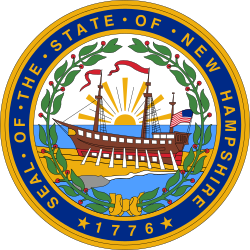| |||||||||||||||||||||
| |||||||||||||||||||||
| |||||||||||||||||||||
| Elections in New Hampshire |
|---|
 |
The 1789 New Hampshire gubernatorial election was held on March 10, 1789, in order to elect the President of New Hampshire. (The office would be renamed to Governor in 1792.) Federalist candidate and former President John Sullivan defeated incumbent Acting President John Pickering and 1785 & 1787 President Anti-Federalist candidate Josiah Bartlett. Since no candidate received a majority in the popular vote, Sullivan was elected by the New Hampshire General Court per the state constitution. [1]


